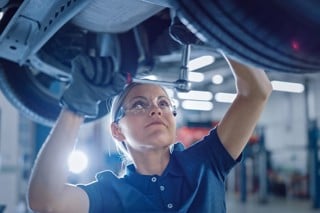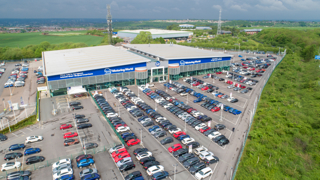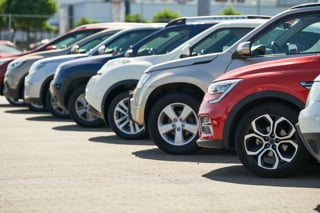Bodyshops were not able to cope with the huge pressure on their businesses caused by low labour rates and high discounts on replacement parts and paint costs.
This, along with factors such as supplying courtesy cars and adhering to ever changing repair techniques, meant the future looked bleak for the repairers.
Almost 18 months on and not much has changed – bodyshops are still facing the same pressures and challenges and the number of repairers continues to decline. Profit margins are minimal, estimated at just £26 on an average repair costing £900, and businesses, particularly the small to medium enterprises, continue to struggle.
Insurers are the dominant force in the industry, and as the suppliers of business, are able to dictate labour rates and time cycles. Most accident repairers and industry analysts blame them for the woes of sector. But will we ever see things change?
“Insurers are still controlling the industry – they will never change and never realise the damage they are doing to the sector,” says Kyle Harris, managing director of Britannia Accident Assist.
Supply and demand
“Fundamentally, the bodyshop industry, like any other, is controlled through supply and demand. The problem is, there is too much supply (of labour) but not enough demand. If a bodyshop cannot do the work, there are 10 other waiting in the wings to take it on. This has suppressed labour rates and also affected quality.”
Harris is passionate about the problems in the industry and who is responsible for them. He believes the only way to effect a real change is for the repairers to take a stand and set labour rates at a retail level.
“Obviously the work providers wouldn’t like this,” he says. “It is not a palatable approach for many, particularly the larger bodyshops, because they require insurers to supply them with the bulk of their turnover. Again, the insurers are totally in control.”
Even the larger bodyshops are now struggling to get a reasonable return on the vast expenditure and investment required to run, let alone open, a site. With a demoralised sector Harris believes that what is needed is a dedicated body to represent the repairers and give them bargaining power with insurers and work providers.
“The problem is that the bodyshops are not represented by one full body. The Retail Motor Industry Federation’s division comes closest and then there is the MVRA and the Vehicle Builders and Repairers Association (VBRA),” says Harris.
“But despite these, the insurance companies still control the industry. The independent repairers need to be able to call upon an individual association, which can approach Government and will be able to influence decision makers. The industry needs a powerful body.”
The retail proposition
As the boss of an accident assistance company, Harris believes that he can at least try to talk to the repairers and persuade them that there is a future in the sector.
“We go to bodyshops and tell them that the more repairs they can take out of the insurance loop the better profits they can make. Retail is a much better proposition, particularly for the independent businesses, compared with insurance work. There may be volume with insurance, but there are no profit margins,” says Harris.
But despite this advice, the number of accident repairers continues to decline. Ten years ago there were around 7,000 primary bodyshops, but the figure today has dropped to less than 5,000, and further declines are inevitable.
“I think we will see more businesses go to the wall unless something changes. Why should insurers dictate to bodyshops what rate they charge? Bodyshops don’t ring insurance companies and tell them how much to charge for insurance,” says Harris. “They need a return on investment but there is a balance – they also need throughput. At the moment too high a proportion of the costs is dictated by a third party.”
The problem is that with so much labour available, the insurers are able to pick and choose where they send cars for repair, and they also have their own repair networks – an area in which many insurers would like to expand.
Return on investment
“If insurers had the chance they would put all their work through their own network and cut out independent repairers. They are just paying lip service to the bodyshop market – if they didn’t need them they wouldn’t use them,” says Harris.
With the number of bodyshops decreasing, this could well be the case in the not too distant future. The only way for the repairers to combat this is to offer lower rates and free services, but this cannot be sustainable for long.
“Bodyshops are running such tight ships and are only just making a return on investment. And that margin be lost easily. It might take a major chain to close and a major shift in the sector before insurers realise what is happening,” Harris adds.
Bodyshops can be profitable
Despite the increasingly difficult conditions in the industry, there are some positives, according to Kyle Harris, managing director of Britannia Accident Assist. He believes there is a real opportunity for dealers to turn their bodyshops into profit centres.
“Most dealerships view their bodyshop as a loss making part of the business. The easiest way to make this change is for dealerships to operate their own accident management system, which they can control. This way they are able to look after their own customer and maintain the satisfaction level,” says Harris.
Britannia Accident Assist runs programmes for retailers, which are branded as the dealerships’ own and which appear to the customer as a complete offering. If a customer is involved in an accident, anywhere in the country, Britannia will recover the vehicle to the dealer for repair and ensure there is provision for a like-for-like replacement vehicle.
This way, the dealer does not miss out on the profit from the repair and is able to keep the customer within its scope.
“The customers are happy as they are in a replacement car of the same make, while the car is repaired at the dealer they bought it from,” says Harris.
“The dealers are happy, too, as they can maintain control of their customers, and increase customer service – which will, hopefully, result in repeat business.”

















Login to comment
Comments
No comments have been made yet.